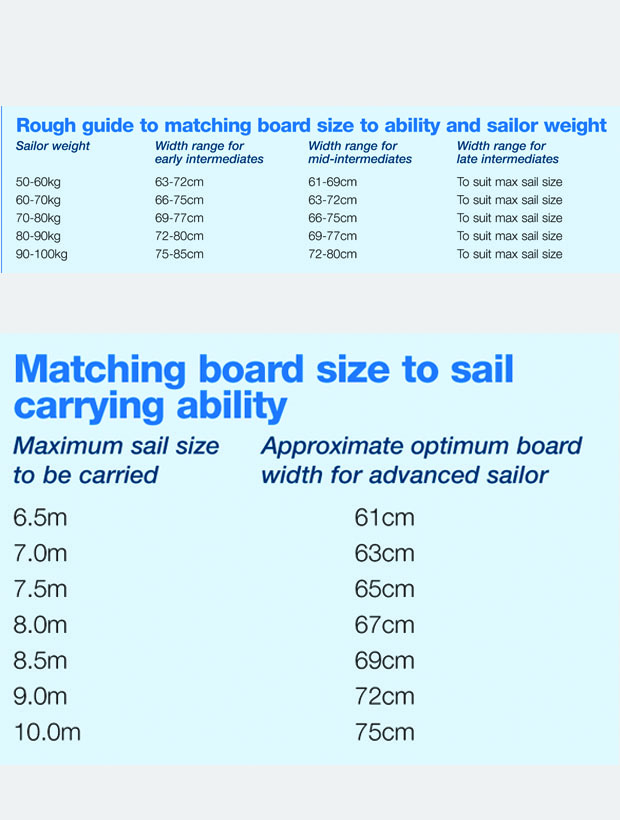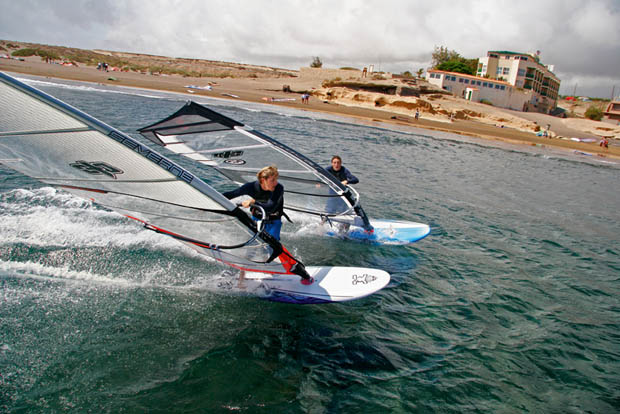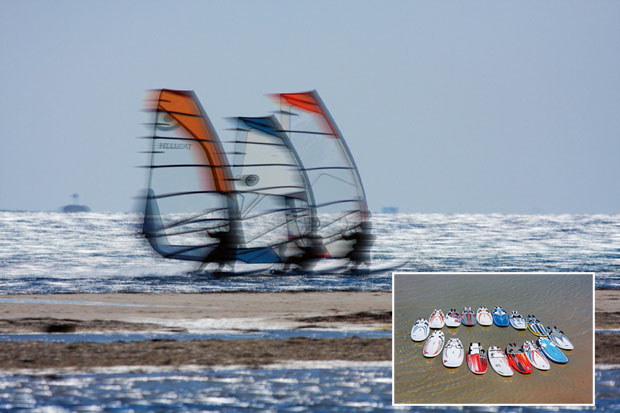
The BOARDS Test Team check out a line-up of classic ‘burn-&-turn’ freerides for everyman. Pix by Andy Jozwik…
Freeride boards are the bread and butter of the sport of windsurfing. They account for the large majority of boards sold, because they are relevant to just about anyone who sails – from the early intermediate who’s just mastered the art of sailing a triangular course in light winds to those who, on another day, might be out throwing spocks and loops on something considerably smaller or more specialist. The beauty of freeride board design is that astonishingly, the same board can be really good both for that very early intermediate and the expert, which is very good news for everyone. It means that there is no absolute requirement for specialisation within the genre. For sure some ranges have features designed to make them appeal more strongly to one camp, but there are many boards in this test that not only could make a great moderate wind 7.5m blaster for our expert testers but also a terrific learning platform for someone struggling to get to grips with footstraps and harness. That is a brilliant spread.
Freeride:
Freeride is therefore a very all-encompassing category – especially since a good all-round freeride with wide appeal still gets close to achieving the excellence that more specialist boards deliver even in their particular area of strength (i.e. it can be very nearly as fast as a slalom board, or very nearly as turny as a freemove board). We would therefore encourage anyone to be very certain about their needs before sacrificing all-round performance for more specialisation. There is certainly specialisation on offer in this area of the market, in the form of boards built for either extra performance (speed or upwind), manoeuvre bias or learner accessibility. These might have marketing tags such as freemove, freecarve or freeride slalom, or simply be built into their marketing descriptions. It is important however to understand that in most cases, it actually only means a slight leaning of suitability in one way – if at all. Indeed, often these marketing tags mean very little – the board is actually still fairly and squarely a freeride. In the box on the right we have given some basic definitions of commonly used categories. However don’t get too bogged down by them. If you think of everything tested here as a basic freeride you won’t be far wrong.
The Massive Importance of Size:
One of the main difficulties in comparing freeride boards is testing like with like in terms of size. If one board is a little bit smaller than another it will feel considerably more fun and agile to one user – and considerably less stable and easy or quick to plane to another. While, as said earlier, a good freeride design can please both expert and early intermediate they would only use the same sized board if the expert was much heavier than the intermediate. If they both weigh the same, the expert might buy from the same range of boards but in two or three sizes smaller.
So, size is really important – when buying a freeride board, picking the right size is your biggest challenge. Unfortunately it is not that simple. If you try and compare boards by volume you can easily end up with something a size or more out from what you should be on. We prefer to use max width which also isn’t perfect but is a lot more precise. If you choose a board based on width you are unlikely to go far wrong. Be sure to either forge your own understanding of comparative widths and how they relate to common usage or else take advice from a dealer or knowledgeable friend who really knows their stuff. (See the separate section for a more in depth analysis of this subject.) Matching Board Size to Need Once you understand the real effective size of a board you then need to match that size to your needs. If you are an early or mid-intermediate this choice will be largely determined by your weight, your ability and where you sail. As you improve the choice will come to depend more on what size of sails you will use the board with. More specifically it should then become the largest sail size to be regularly used which determines the size of the board you buy. (Obviously heavier sailors tend to use bigger sails and will therefore tend to use bigger boards.) The boards tested here are grouped between 66 and 69cm of width.
By sail size:
This is a perfect board size for competent sailors to carry up to a 7.5-8.0m sail. This is a common sail size for enjoying marginal to moderate planing winds (top end of a Force 3 to top of Force 4) while still retaining the excitement of high speeds and relatively unencumbered manoeuvring and rig handling. In sheltered waters it is possible to use these boards in very strong winds with very small sails but a sail of about 5.7-6.0m would be a sensible smallest practical size for getting the most out of this size of board.
By weight and ability:
Intermediate level sailors of about 65-80kg who have recently learnt to use the harness and footstraps and are able to waterstart will find this size a good compromise. It will provide some stability for when they aren’t planing or are attempting to learn manoeuvres, but enough response and control when planing comfortably or beginning to get overpowered. Later intermediates of anywhere between about 70 and 100kg will find them fun and exciting and good for learning the carve gybe. For early intermediates who are still uphauling a bit more width and volume is needed, and this 66-69cm size is mainly relevant to smaller sailors of about 50-70kg. We have done a couple of tables and charts to give more specific information for matching board sizes to sailor need. It is a tricky subject though, due to the high number of variables, and there is no substitute for either good advice or trying a range of boards over an extended period, like a two week holiday.
The Story of the Test
The team:
The team was made up of four experienced testers in Ian Leonard, Emile Kott, Mariusz Golinski and Jonno Dunnett, with four guest testers of late intermediate to expert standard providing further feedback. One of these guesters was a windsurf retailer which gave us a different perspective, making us very aware of the importance of a plain white nose for making an easy paint job and repair for catapult damage on intermediate boards! Be warned…
The location:
We chose to test at the new Oceansource centre in El Tur in February. El Tur reliably provides both flat water and swell conditions to both flatter and challenge the freerides as well as plenty of reliable Force 4 winds and above at that time of year. The testing: The boards were used in a good range of conditions and windstrengths, and compared for early planing, blasting out in the swell, manoeuvring sessions and competitive slalom. The latter were informal races around buoys or master blasters across the bay, which really pinpoint the performance strengths and weaknesses of the various boards.
The boards:
Most of the boards tested could broadly be described as versatile all-round freerides that were fun and exciting to sail. Most were applicable to all levels of sailor other than complete beginners.
Burn-&-turn:
Best served by far from the boards in this test are the burn-&-turn brigade. By this we mean the kind of sailors who spend most of their time going fast (or trying to), turning round (or trying to) and coming back. As this comprises the vast majority of freeride buyers this is a good result. Most of the boards are now so easy to sail and feel so involving and responsive that they are a joy to sail, and we were both pleased and reassured by the overall standard. Freeride-slalom: One board (the JP Supersport) was clearly more geared to speed than the others and consequently a bit more technical to sail. There were one or two others that had extra performance attributes but in a more all-round mix. One or two of these proved popular with certain sailors but the boards that proved most universally popular were nearly always those more geared to simple burn-&- turn and responsive manoeuvring.
Intermediate appeal:
While all bar four would do well for the correct weight early intermediate, a few of the boards had special features that really would give extra aid to the progressor. If you are buying a freeride to learn strap and harness use then it is well worth considering one of these as they can smooth the learning process. Unsurprisingly the smaller boards tended to be the most popular, even despite having two late intermediate heavyweights (90-100kg) on the crew. Just a couple of cm of width can make a significant difference! However, early to midintermediates need to be careful to keep the size up to afford them greater ease but later intermediates should be careful not to play it too safe with size as it really does compromise response. As ever the guesters found their preconceptions being destroyed and boards they never expected to like topping their lists while better respected brands sometimes spiralled downwards in their estimation. One expressed it thus: “The major thing out of this test I would say is for readers not to get sucked into loyalty or the hype associated with a particular brand, but to try as many different boards to get a more balanced view.” As testers we would strongly back up this view and urge buyers never to buy by brand but to always see who is making the best boards in the particular area of the market you are interested in.
OUR DEFINITIONS
Freeride:
Any board from about 105L up to about 150L that is designed to plane early and easily (relatively flat planing rocker) and be recreationally fast, easy to sail and control, comfortable underfoot and able to carve turns easily and predictably. Freerides are basically designed for flat water use rather than waves but good ones will certainly handle chop, as well as swell and small waves no problem. By use it is a pretty wide definition that encompasses most boards of that litreage range. However, this doesn’t mean that it is a wide definition by design – modern freeride boards are actually pretty similar to each other. The designs have converged over the years and the ‘template’ is now quite tightly defined by many homogenised measurements and features of rockers, tail widths, vee type, rails and volumes.
Freemove:
A freeride variation usually found towards the smaller end of the freeride range of boards, favouring increased manoeuvrability and a bit more suitable for sailing in waves (jumping or riding) and for freestyle. Boards will tend to be a touch shorter and have shorter planing flats with higher lift noses and possibly lower volume rails. Modern freemoves actually tend to be pretty similar to freerides, since it remains vital not to sacrifice that all important easy planing rocker if the freemove is to continue to plane early. If it doesn’t, it becomes something much more specialised.
Freeride-slalom:
The freeride-slalom is, as the name suggests, a synthesis of freeride and speed. Make no mistake though, all freerides are fast so any change to the basic design blueprint will only show an incremental speed difference and there will be side effects. A 2% speed gain due purely to board design would be a lot. Typical ways in which freeride-slaloms up their performance include:
• Light weight construction (inevitably at some cost to durability).
• A more continuous curve of planing flat for top speed (at some cost to early planing and ease of sailing).
• Lower nose rocker (at some cost to sea kindliness and freemove appeal).
• Shorter length (at a cost of ease of sailing).
• Outboard straps and deck dome (at a possible cost to comfort for more recreational or manoeuvre sailing).
• Tail cut-outs (see separate section).
(Early) intermediate freeride: Some freerides add features to further aid the learning process for sailors of lower abilities. Design features might include:
• Heavier, more durable construction (and/or the addition of an optional nose cone for protection from catapult damage – well worth investigating for the early intermediate).
• A long planing flat that will greatly aid progression onto the plane and pitch control once planing (see measurements – 2cm point higher than 160cm).
• The provision of various options for the positioning of footstraps to allow for steadily measured progression.
• Greater length. A longer board tracks more securely and is considerably easier to sail and hold upwind when not planing.
• Greater vee. Vee or channels in the underside of a board can increase grip and allow more directional tracking and easier upwind progression.
Some of the above features may slightly knock back the feeling of free sailing and excitement that a very competent sailor might appreciate, particularly if the mix is very intermediate weighted. But we would reiterate that extremely practical early intermediate suitable boards are available that maintain strong competent sailor appeal.
OUR FAVOURITES:
In alphabetical order, the AHD Fast Forward 117, Drops Naked 112, Fanatic Eagle 113 and HiFly Free 118 all provided fantastic burn-&- turn performance. Fast, fun, responsive and exciting, every one of them was a joy to blast and great to gybe. If you are in the market for uncomplicated, high performance, exciting recreational boards they really don’t come any better than these. They appealed to pretty much all our testers and guesters and would all do a good job for the right weight of early or midintermediate as well. Of these four the Drops, being the smallest felt the most lively, the Fanatic the most manoeuvrable, the HiFly exceptionally smooth and comfortable and the AHD a shade bigger than the others so slightly better for the heavier sailor. However, their similarity was far more marked than their differences. These four boards, and one other very like them set the tone of the test, helping to make it one of the most enjoyable to carry out for many seasons. We love them because they are refined in their shape and performance and yet simple, without gimmicks or pretensions just doing the ordinary everyday freeride things brilliantly well. They don’t sacrifice ease or manoeuvrability by trying to capture an extra 1% of speed or upwind performance and yet they are still quick; but above all they are fun.
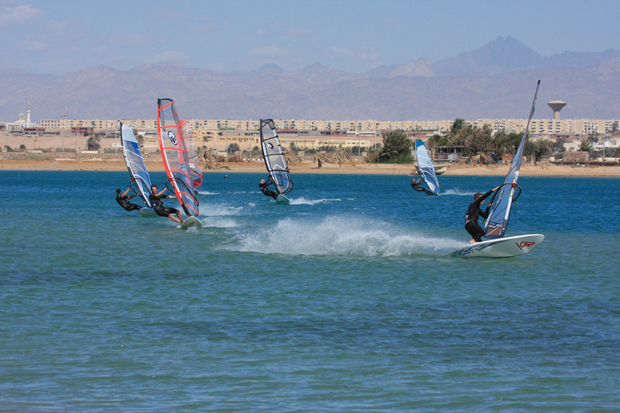
The ‘one other like them’ was the JP X-Cite Ride 110. In most respects the JP is exactly like the four boards detailed above with the same style and qualities. However, we have singled it out for two reasons. One was its exceptional popularity as it came near the top of literally everyone’s lists and the other is because it is so easy to sail that it does seem to offer extra help for early to mid-intermediates without sacrificing appeal for late intermediate to advanced sailors.
Similar in many ways to the above and also extremely popular with nearly everyone was the Goya FXR. It is slightly different though because it is a little bigger and not quite as fast or quick to plane. It is however extremely easy to sail and great fun. It has a slightly wave-style feel of manoeuvrability compared to the other boards. With a thicker, wider tail it is not so sharp but it feels very loose and easy to change direction for so large a board and also offers a lot of support for early to mid-intermediates without losing its fun and responsive feel. There were two boards in the test that stood out from the rest for different reasons. Likely to be the most popular is the F2 Xantos 124. This has a lot to do with the price. At just £569 it is by far the cheapest board on test and potentially a real bargain. Bargains have to offer value though, and the Xantos sure does. It is really well targeted towards the early to mid-intermediate and is the only board on test that really offers a lot of tangible benefits to progressors. It is the easiest when off the plane, exceptionally easy to sail and really stable and controllable when planing. It is quite heavy but despite this is still remarkably responsive and fun to sail even for late intermediate to advanced sailors, thus still offering good space to grow into.
The other ‘unusual’ board was the JP Supersport 107. It is shorter and lighter than the others and features cut-outs and a more curved planing flat for higher top speed. It is a synthesis of freeride and slalom. Arguably these ‘freeride-slaloms’ aren’t quite as quick as slalom boards or quite as much fun as freerides. However, the Supersport, for all its minor sacrifices in ease and manoeuvrability, was a real buzz to sail really fast and free, either in the flat or out on the swell and it was the favourite of our medium / lightweight advanced guester. Although it was the only one of its type in this test, there are others on the market of similar ilk.
I know we have mentioned half the boards already but there are three more that deserve a strong recommendation. All three are basically all-round freerides but all have slight pretensions towards a performance bias. This may be why they weren’t as universally popular as the above boards as they sacrifice a shade of zip and response in manoeuvres but they were still very well liked and had their supporters. These are the RRD Z-Type 120, Fanatic Hawk 123 and Tabou Rocket 125. Of these the Hawk is the most like the burn-&-turn boards that head up these recommendations and it is the lightest, most manoeuvrable and perhaps the fastest of these three. The RRD has a very classy feel and has excellent moderate wind performance while the Rocket is also an excellent big sail carrying moderate wind performer that is also a very accessible board for early to mid-intermediates.
So, all in all a very nice group of boards, offering a great deal of quality to this very important area of the market.
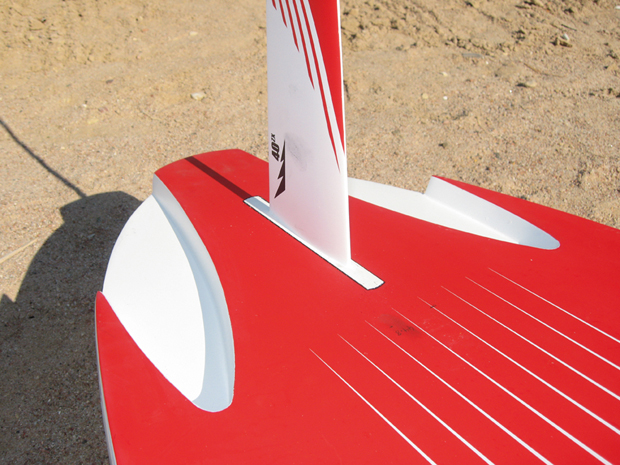
TAIL CUT-OUTS:
Several of the boards in this test feature tail cut-outs which are basically scallops taken out of the underside of the tail. The theory behind them is that they reduce the wetted area and effectively widen and shorten the planing footprint to allow less drag and more speed. This ‘cutting out’ has to be done either side of the fin though, otherwise the fin would need to be repositioned too far forward or else it would start to cavitate (spin out) as air is dragged back from behind the tail down the fin.
Our findings are that they do slightly increase speed and they give the sailor more input into the board’s angle of pitch. Depending on their size though they can also have quite an effect on how the board sails. It is easier to imagine their consequences if you think that they effectively make the tail wider and squarer and bring the sailor back down the board into a more critical ‘tail weighted’ position. They make the board more sensitive to banking angles, making it easier to stall when bearing away too suddenly or seesaw through turns. They increase the possibility of yaw or pitch through the gybe and require extra sensitivity and technique when getting planing.
Clearly very small ones have only very minor or almost negligible effects, positive or negative, and any effect is almost impossible to disentangle from the effects of other design factors, particularly as boards with cut-outs tend to have similar traits anyway. However, once they get a bit more significant, they definitely add an element of technical difficulty and reduce ease of manoeuvring. We feel that occasionally they are used more because of the ‘vorsprung durch technik’ marketing advantages than to give real benefits to the people likely to use the boards they are on. So while we are happy to see them in freeride-slalom boards marketed to competent sailors, we are very keen that the majority of sailors don’t feel they are missing out by not having them!
ASSESSING BOARD SIZE:
Many people think of volume as a clear and accurate figure for assessing board size, but it is quite unreliable for various reasons. The two most important being that it is often quite inaccurate and not possible to measure yourself. Maximum board width, tail width, rocker curve and length all have a far greater input on effective board size than volume. If you take a board like the Fanatic Hawk 123 from this test and compare it to the JP X-Cite Ride 110 it illustrates the point very clearly. The Hawk quotes a considerable size advantage of 13L but … the max widths are identical, the tail width is identical, the X-Cite Ride is actually longer and the X-Cite Ride has the longer planing flat. So let’s ask a few questions of these two boards that might relate to their effective size.
Did the bigger (by volume) Hawk get planing earlier? No, if anything it planes later. Does the bigger Hawk overpower earlier? No. Is the bigger Hawk less manoeuvrable? Not significantly. Is the bigger Hawk more stable at rest? Not significantly. Will the bigger Hawk carry a bigger sail? No significant difference.
Would the Hawk be more suitable for a heavier sailor? We wouldn’t recommend either for heavyweight (75kg+) early intermediates, and for lighter ones the stability is all that matters. Advanced heavyweights would usually not need the extra volume. However, midintermediate heavyweights who expect to spend time off the plane might quite appreciate the extra volume of the Hawk. So clearly assessing the effective size of these two boards by their 13L difference of volume would only have very limited relevance and be extremely misleading. They are effectively the same size and yet there are many buyers who might be actively looking for a 120-125L board but be put off by a 110 (and vice versa).
Width as a yardstick: For several seasons we have used max width as the most relevant of the three commonly given measurements (length, volume and width) for assessing board size. It is not 100% reliable by any means but it does a much better job than volume and an infinitely better job than length! Unfortunately the industry still largely uses volume which doesn’t help increase understanding of width. This test includes boards in the range of 66-69cm of width. Freerides come in sizes from about 62cm up to about 80cm. Perhaps the most commonly sold size is 69- 72cm as this is very popular for medium-weight intermediates, but a lot of 72-77cm boards are sold as well to early intermediates, particularly those practising the sport on inland waters with their more gusty winds and less buoyant fresh water. Have a look at the charts comparing board widths to sail sizes and sailor weights and abilities; it is well worth spending time to understand these.
Early intermediate: Sailors who are still learning to use the harness and straps effectively and/or who can’t yet waterstart. Mid-intermediate: Sailors who can use the straps and harness and can waterstart but struggle to gybe or cope well with a wide range of wind and water conditions.
Late intermediate: Sailors who can cope with a wide range of conditions and are beginning to get some success with the carve gybe and develop an efficient stance. Advanced: Good stance, early planing technique, able to cope in waves and stay on the plane when gybing. Variables We have left quite a big range for each category of weight and ability. This is because every situation is different and the range should encompass those variations. A sailor may be fit or unfit, athletic or not and need to adjust board size accordingly. They may sail regularly, or only once a month during the season. Then there is location. If you sail in clean wind and flat salt water, like an estuary protected by flat land then you will require less board size than a sailor on an inland lake where the water is lower in density and the wind is likely to be gustier and on average lighter.
So if you are at the lowest end of a weight category, highly motivated, fit and athletic, sailing every day in Poole Harbour and on a mission to improve rapidly but want a board to grow into and don’t mind struggling a bit at first… the chances are the smallest recommended size might be already too big! Early intermediate alternatives The early intermediate stage certainly doesn’t have to be confronted on a freeride board. Many people find it easier to learn strap and harness technique on beginner or progression boards like the Fanatic Viper or AHD Zen (and many others). Typically these will be a little bit longer and wider and feature dagger boards and PVA decks. They tend to make it considerably easier and more fun to sail in lighter (non-planing) winds and learn the basics of strap and harness but they are a bit less easy and fun once up and planing and therefore don’t leave quite as much to ‘grow into’. We would certainly recommend them as a better bet than getting a freeride that is beyond our recommended width range.
It is sensible for late intermediate to expert sailors to match the size of their freeride to the biggest sail they will use with that board. Thus, if an advanced sailor expected to use nothing bigger than 7.5m he might buy a board with a max width of about 65cm. Late intermediates should add 2cm to that figure as it assumes a good level of skill in getting boards onto the plane and an extra bit of width will help the less expert. In fact any sailor should consider adding up to 3cm onto that figure if they expect to spend much time off the plane or if they want extra stability for tricks and light wind freestyle. This chart is specifically for use with freeride boards. If you are looking for upwind or ultimate early planing performance or else for aerial freestyle performance boards would commonly be wider for a given sail size. For downwind speed they might be narrower.
